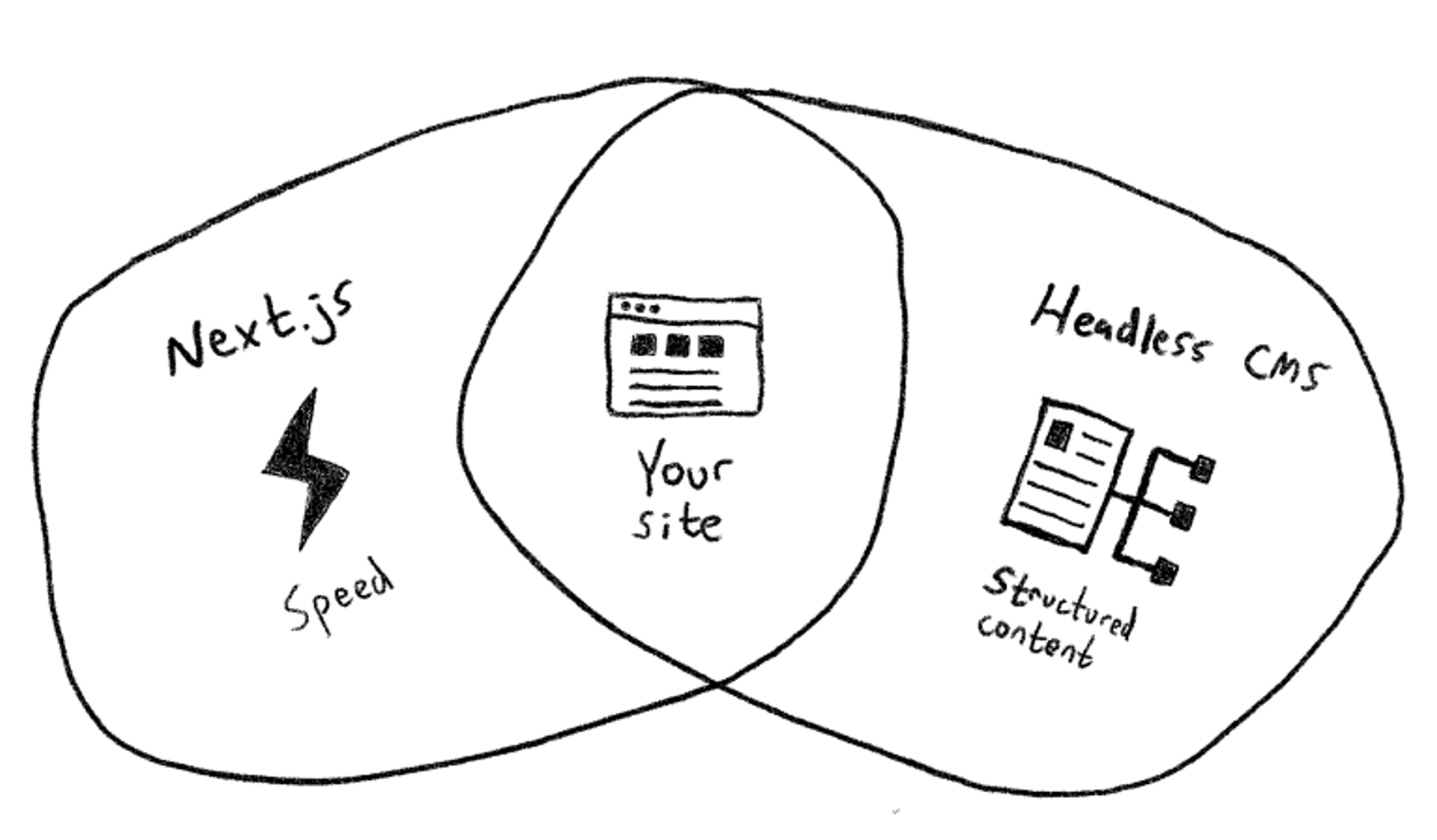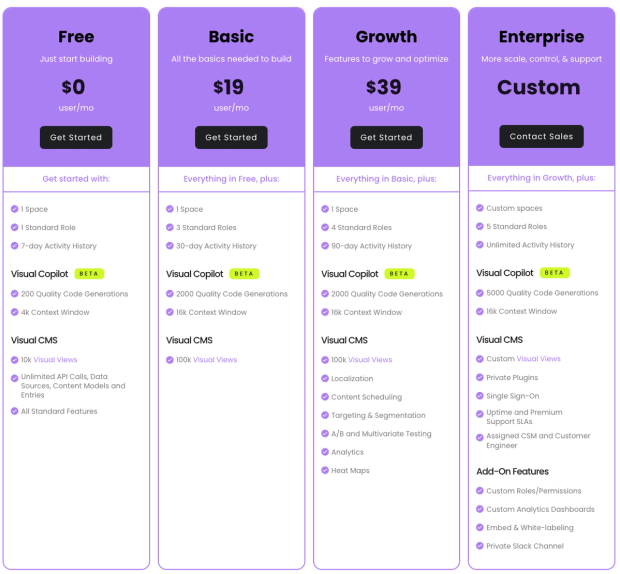Best Headless CMS for NextJS in 2023
In this article, we'll dive into the updated top headless CMS options and compare their features, benefits, and drawbacks to help developers make an informed decision.
In this article, we'll dive into the updated top headless CMS options and compare their features, benefits, and drawbacks to help developers make an informed decision.

We've just released an updated article for 2024 on the best NextJS CMS, providing fresh insights and the latest recommendations for developers
Sanity, a prominent headless CMS since its inception in Norway in 2016, has become a favorite due to its flexibility and ease of use. It provides a comprehensive interface for content creation and editing, along with an API for data retrieval, storing all data in easily accessible JSON documents.
As an open-source CMS, Sanity boasts a vast community and an extensive array of plugins and integrations, often surpassing its competitors in this regard.
Sanity is praised for its developer-first approach, offering extensive customization options for every aspect of the CMS to fit specific project needs.
It's designed to scale from small blogs to extensive web applications within a single studio environment, accommodating the growth of your projects.
Sanity features its unique GROQ query language, resembling GraphQL but without the need for schema creation, offering more flexibility and simplicity.
By the end of 2023, Sanity is gaining momentum, continuing to evolve by integrating AI plugins and forming partnerships with major companies like Vercel and Shopify.
With its flexibility comes a level of complexity; Sanity can be challenging for beginners and lacks out-of-the-box solutions, requiring experienced developers.
It might not include some features users are accustomed to, such as dynamic folder creation or content duplication across documents, which are not even available through public plugins as of December 2023.
Sanity's pricing ranges from a free plan for individuals to an enterprise tier with custom pricing. The free tier includes basic features for up to 20 users, while the $15/month Growth plan adds more users, roles, private datasets, and AI assistance. Enterprise options offer extensive customization, advanced security, and dedicated support.
Given its flexibility and expandability, Sanity is well-suited for any project, especially those that require experienced developers ready to develop custom solutions.
Storyblok, a market contender since 2015, maintains its lead with superior end-user experience. It simplifies the content creation process for editors, featuring one of the most advanced visual editors available that enhances the workflow and overall content management experience.
The CMS design is intuitive, preventing content editors from facing difficulties while working or updating content.
Storyblok offers comprehensive, integrated solutions for content creation and editing, document management, and localization, emphasizing ease of use.
The CMS's ready-made solutions can be expanded with custom plugins or UI changes, written in frameworks like Next.js or Nuxt.js, simplifying development.
Storyblok continues to evolve, regularly introducing new features to improve user experience.
Its almost negligible weaknesses highlight the need for individual project assessment to determine the best tool fit. Some may find it less flexible than other CMS like Sanity.
Storyblok's pricing plans cater to various business sizes, starting with the 'Entry' plan at €99 per month for 5 users and basic features. The 'Business' plan is priced at €849 per month, supporting 20 users and offering increased limits and 1TB of traffic. For larger organizations, the 'Enterprise' plan at €3,299 monthly includes 30 users, more spaces, and 2TB of traffic, with additional users and traffic available. An 'Enterprise Plus' plan provides custom solutions, including 100 users and 5TB of traffic, with custom pricing and advanced features like SSO and a 99.99% uptime SLA.
Storyblok is ideal for marketing projects that require streamlined content management, from blogs and news sites to extensive article-heavy websites, and can integrate with platforms like Shopify for e-commerce solutions.
Contentful, as one of the pioneering headless CMS on the market, boasts a significant track record and customer base. Despite recent trends where competitors have made more audacious advancements, Contentful remains a robust platform.
Contentful provides comprehensive tools needed for medium-complexity projects and a vast array of integrations for various services.
A vast repository of case studies and solutions makes it a reliable starting point for those new to headless CMS platforms.
Contentful is noted for its stability and reliability, ensuring that users can count on it at any time.
Despite being an older product, Contentful keeps up with trends, integrating AI features like text and image generation.
The CMS might lack the flexibility some advanced users seek, and in terms of user experience, there are other CMS platforms that have surpassed it.
Contentful's pricing structure includes a Free plan for individual developers and marketers, which supports up to 5 users and includes community-based support and basic content apps. The Basic plan, at $300 per month, expands on this, catering to larger teams with up to 20 users and technical support. For organizations requiring scaled experiences, the Premium plan offers custom solutions, including a bespoke user count, advanced roles, support services, and security features, with pricing available upon request. Each plan provides an Intro space license with options to upgrade for larger requirements.
Contentful is an excellent choice for medium-complexity projects that need a quick launch, such as event websites or marketing programs for small businesses.
Builder.io offers unparalleled control over content, similar to Webflow, but with standout performance. It boasts a technical team that contributes to both the core CMS and other beloved open-source projects, even offering official Next.js integrations.
With advanced on-page content editing capabilities, Builder.io enables intricate content layout and styling adjustments, providing full control over the presentation.
Flexibility does not compromise performance; projects retain high speed despite content volume and custom configurations.
Builder.io pushes the envelope with AI features, facilitating tasks like content and design generation, including direct Figma design imports.
The platform's flexibility could be daunting, with a learning curve for new users. The interface complexity may overwhelm those accustomed to more rigid systems.
Builder.io's pricing model offers a range of plans to suit different needs. The Free plan is for those starting to build, with one space and basic features. The Basic plan at $19/user/month includes three roles and enhanced analytics. The Growth plan at $39/user/month expands further with more roles and extended history. For larger enterprises, a custom plan is available, providing additional code generations, custom views, private plugins, and premium support features. Add-ons for custom roles and analytics are also available for more tailored solutions.

Builder.io is ideal for medium-sized projects that demand deep customization for each page, offering numerous integrations and ready-made solutions, suitable for blogs to e-commerce platforms.
A superb open-source option for those who prefer self-hosted solutions with relational databases, offering full feature access on its free plan.
A versatile CMS with a solid customer base, equipped with all the essential features without standing out amongst competitors.
This CMS provides a GraphQL API, perfect for those wanting to work with GraphQL without the hassle of schema creation, though for more flexibility, other platforms might be considered.
Choosing the best headless CMS to pair with Next.js depends on your project's specific needs. Sanity, with its developer-first approach and flexible GROQ query language, offers deep customization, ideal for complex, scalable projects. Storyblok's user-friendly interface and ready solutions cater to content-focused projects, enhancing user experience. Builder.io's advanced content editing and AI solutions excel in medium-sized projects demanding high customization. Each CMS offers unique strengths; your choice should align with your project requirements, technical capabilities, and desired user experience.
To learn more about these CMS options and how they can be used with NextJS, you can visit their official websites:
Additionally, NextJS provides a wealth of documentation and resources for developers looking to build with the framework. You can find more information about NextJS on their website: https://nextjs.org/.
Additionally, read about the top headless CMS for React in our related article. Gain a comprehensive understanding of how these platforms can serve React applications, offering scalable and efficient content delivery.